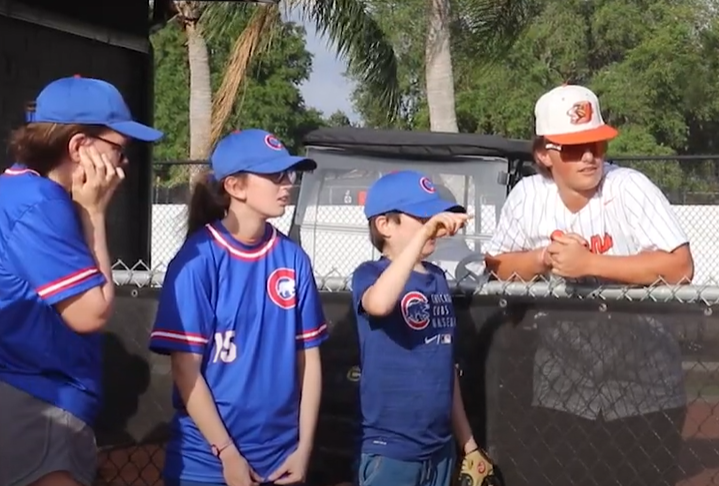There are nuances and perils to autism diagnosis
There are many perils and nuances to autism diagnosis and its process.
February 22, 2023
The archetypal autistic person is an image that lingers in both the media and in public consciousness. When picturing this individual, most tend to imagine a young boy, one that is five to eight years old, perhaps, that was diagnosed quite early in his life and overflows with excitement at the thought of trains. While this is not necessarily a fictional picture, as there certainly exists many young autistic boys that are fans of trains, it is one that is not representative of the larger autistic population. Many seem to forget that autism is a lifelong condition and does not disappear with puberty; and many seem to forget that there exists autistic people that are not young boys with an affinity for modes of transportation.
Consciousness of this dissonance between the stereotype and reality has become more prominent in discussions regarding mental disorders both on social media and in the real world. It also leads to the questioning of the oftentimes faulty methods used to ‘detect’ autism in children. For instance, there is one woman for every four men diagnosed with ASD; however, this does not mean that men are somehow more likely to be autistic. It means that males are simply more likely to be diagnosed, especially as children. It is obvious to any reasonable observer that autism is prevalent in all genders, all cultures, and all ages. Although, help and assistance for many autistics is hindered by the ever-present stereotype of the train-loving young boy.
For many neurotypicals, autism seems to be a disorder that places the affected in an almost perpetual state of childhood; thus, it is rarely diagnosed in adults. Instead of a proper diagnosis, autistic women are often thrown a multitude of diagnoses and medications for things that are better explained by ASD. Furthermore, Black autistic children, on average, tend to be diagnosed one and a half years later than their white counterparts. Instead of receiving proper help, many Black children are diagnosed with intellectual disabilities and emotional disorders. Many emotional disorder diagnoses, such as conduct disorder, are treated as ‘bad child’ labels within the education system; thus, while their white peers often receive support and nurturing, many Black autistic children are discarded and mistreated.
It is clear that the system in regards to autism diagnosis is fundamentally broken. Thus, in the meantime, it is important that resources regarding ASD are widely available to anyone that may benefit from them. However, it is important that this information is both reliable and correct. On sites like TikTok, the state of the autism education community teems with nuance. The benefit from it is that autistic people of all backgrounds are able to share their various experiences on a large scale; one that can reach the masses. The obvious drawback to this is the potential spread of misinformation. While niche experiences are common within autistic people and the sharing of them could provide some feeling of community, the suggestion that, for instance, rubbing one’s feet together makes them autistic is simply preposterous. A balance must be achieved between complete discouragement to pursue an autism diagnosis and all-encompassing pseudoscience.
While self-assessment is a valuable tool (especially with women and other marginalized groups,) and serves as a stepping stone to a possible diagnosis in the future, it is something that needs to be done with caution. Truly, it must be kept in mind that one might just not be autistic, and that there is nothing wrong with that. The process of self-reflection is exceedingly valuable, even if one comes to the conclusion that they do not have autism.

![Prom king Colin Napier and queen Leah Hopkins dance the night away during the Golden Gala on April 26th. Prior to the prom, the Student Government must make many preparations over the course of months in order to ensure it goes off without a hitch. However, their work eventually pays off when it comes time for the dance. “We set up [the prom] the day before, and it’s horrible. We’re there for a very long time, and then we get our beauty sleep, and then we get ready for prom the next day,” Aubrie Sandifer said.](https://oviedojournalism.com/wp-content/uploads/2025/05/Oviedo-197-800x1200.jpg)






![Hopkins at Honor Grad with golf coach John McKernan. As Hopkins’ golf coach for the last two years he has seen Hopkins’ growth as a player and person along with their contributions to the team. “[Hopkins] has just been really helpful since I took [the golf team] over, just anything I wanted to do I ran by [Hopkins],” said McKernan.](https://oviedojournalism.com/wp-content/uploads/2025/05/B66A7760-800x1200.jpg)
































carley quintana • Mar 3, 2023 at 1:53 PM
I like this article because I think it’s important to spread awareness about autism and to try to put an end to its stereotypes. My little sister has autism and it makes me upset when uneducated people make rude comments and enforce horrible stereotypes. It’s sad that so many people don’t understand autism because it isn’t something we are taught. Autism is more common than people think and it needs to be normalized.